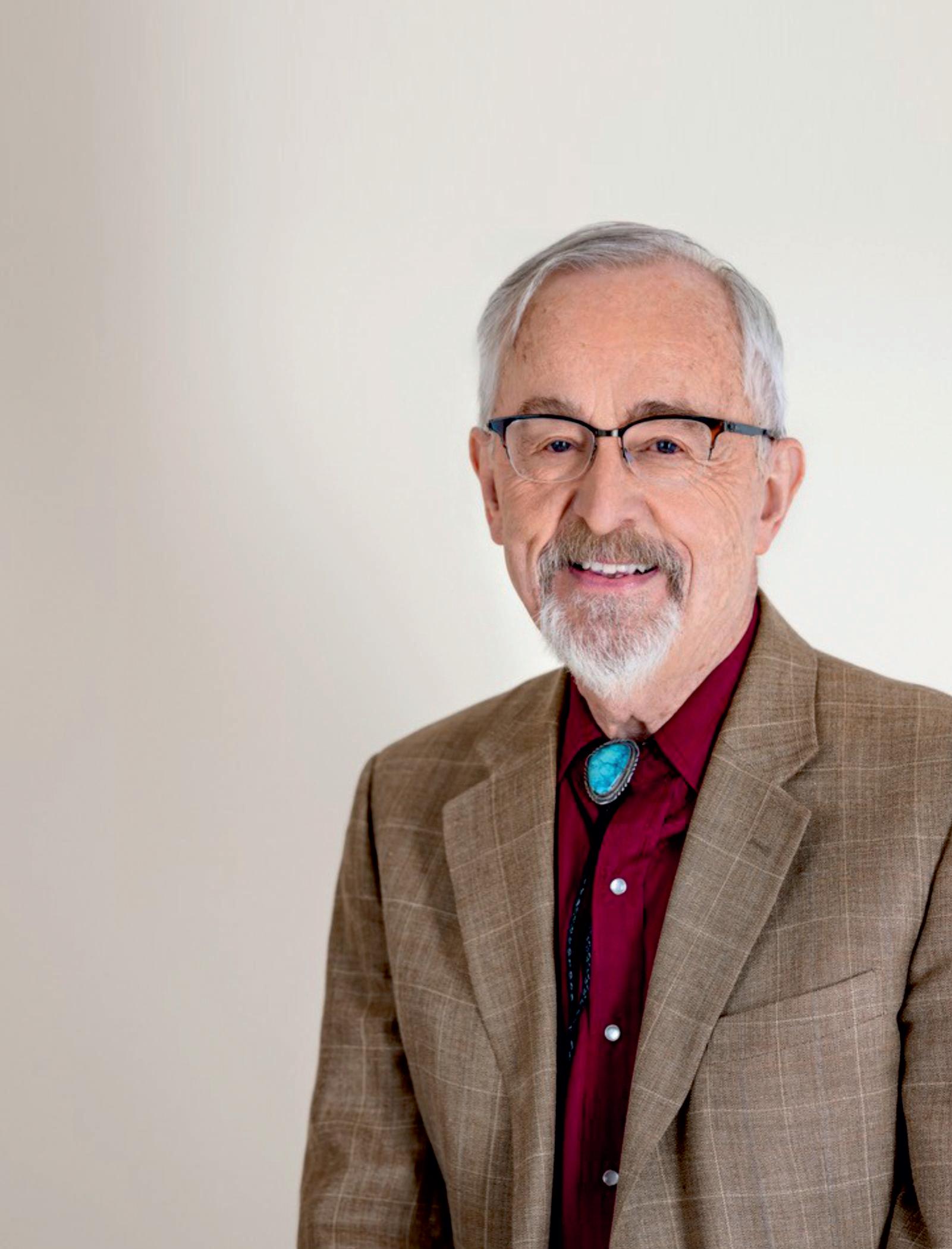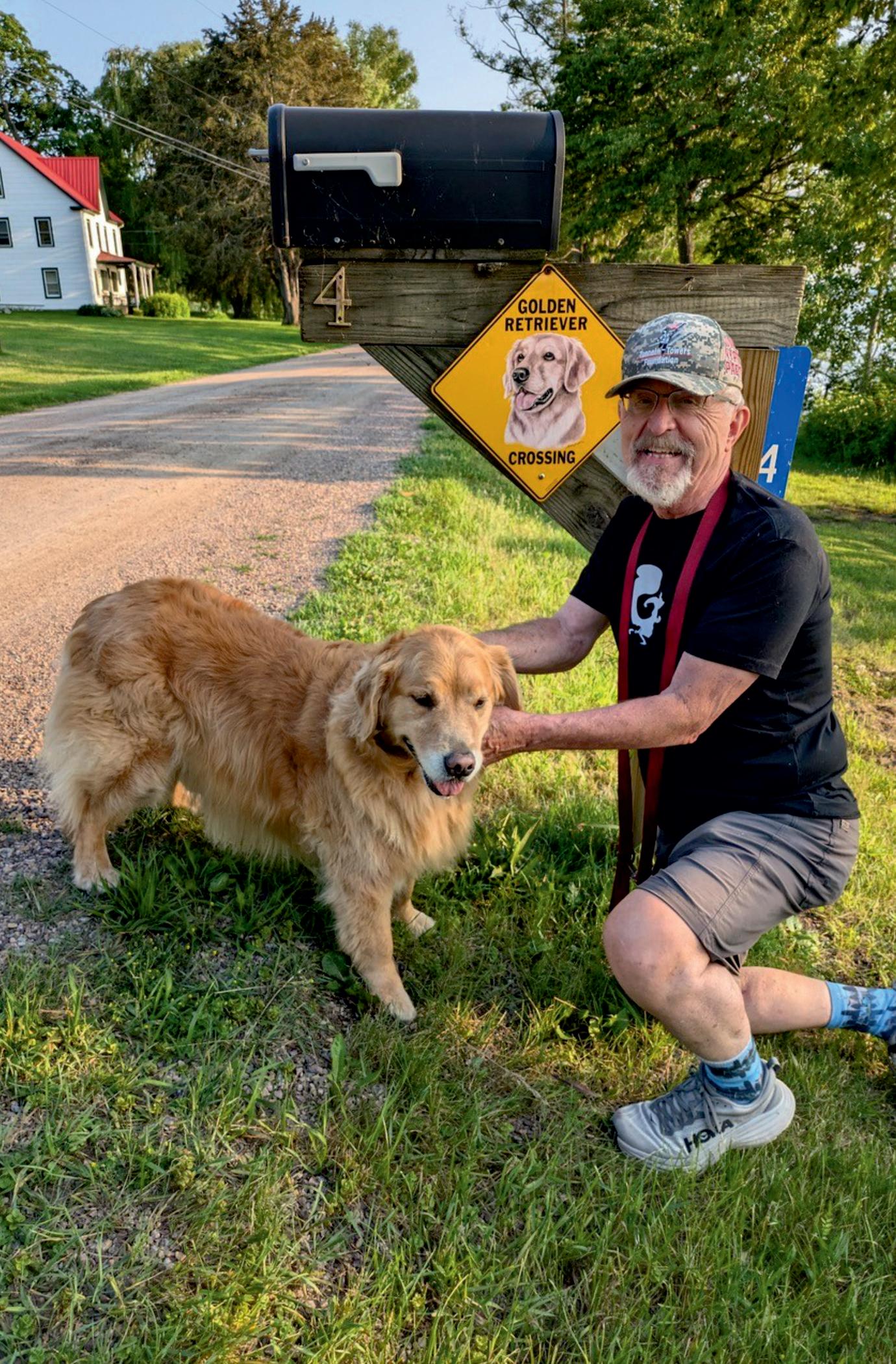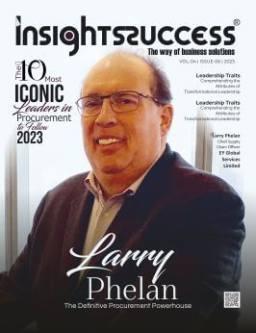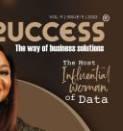









Intheever-evolvingworldofeducation,veryfewnamesresonatewithenduring
impactandunwaveringcommitmentthewayProfessorRichardLarson’sdoes.As webringyouthisspecialeditionbyInsightsSuccesstitled, Richard Larson: Celebrating 55+ Years in Education – 2025,wearenotjustcommemoratinga remarkablecareerwearecelebratingalifetimededicatedtothepursuitofknowledge, innovation,andinspiration.
Foroverfivedecades,ProfessorLarsonhasbeenaguidinglightatMITandbeyond, pushingtheboundariesofwhat’spossibleinoperationsresearch,educational technology,andgloballearningaccessibility.Oftenreferredtoas“Mr.Queue”forhis groundbreakingworkinqueuingtheory,hehasalsobeenapioneerinapplyingthose principlestoreal-worldchallengesfromurbaninfrastructuretodigitallearning platforms.Whatstandsoutevenmorethanhisacademicbrillianceishishumanistic approachtoleadershipandmentorship.Students,colleagues,andglobalcollaborators speaknotonlyofhisintellect,butalsoofhisgenerosity,humility,andenduring curiosity.
Thiseditionismorethanaretrospective.ItisatributetothevaluesthatDr.Larson embodies—rigor,resilience,andrelevanceineducation.Throughacuratedcollectionof interviews,reflections,andinsights,weaimtopaintafullpictureofhisinfluence,not justinacademia,butinshapingthewayeducationadaptstotheneedsoftomorrow
Whetheryou’reastudent,educator,policymaker,orsimplysomeonewhobelievesin thepowerofknowledgetochangetheworld,wehopethisissueservesasboth inspirationandinvitationtoleadwithpurpose,learnwithoutboundaries,andcontribute withpassion.
Celebrating 55+ Years in Education – 2025
A R T I C L E S 20 From Classroom to Culture How to Build an Educa�onal Legacy for Future Genera�ons? 24 Spearheading Change The Power of Educa�on Leadership


Editor-in-Chief
Merry D'Souza
Managing Editor Executive Editor
Preston Bannister
Visualizer
David King
Senior Sales Managers
Jenny Fernandes
Art & Design Director
Rosy Scott
Bruno Alves, Jack McDowell
Marketing Manager Technical Head
James M.
Jacob Smile
Technical Specialist
Irvin Wilson
SME-SMO Executive
Steve Rodrigues
Robert Brown
Assistant Editor
Michael Wayne

Circulation Manager July, 2025
Database Management
Stella Andrew
Associate Designer
Angela Ruskin
Business Development Manager
Ryan Brown
Sales Executive
Max Floyd
Business Development Executives
Simon, Tom
Digital Marketing Manager
Dominique T.
Research Analyst
Frank Adams
Technology Consultant
David Stokes

sales@insightssuccess.com

We are also available on :




Follow us on : www.facebook.com/insightssuccess/ www.x.com/insightssuccess
Copyright © 2025 Insights Success , All rights reserved. The content and images used in this magazine should not be reproduced or transmitted in any form or by any means, electronic, mechanical, photocopying, recording or otherwise, without prior permission from Insights Success. Reprint rights remain solely with Insights Success.

“What began as a temporary position quickly turned into a passion. Teaching and research became integral parts of my life, and my enthusiasm for academia only deepened over time.”
F E A T U R I N G


Richard
Larson: Celebra�ng
Somecareerpathsarecarefullyplanned,whileotherstake shapeinwaysoneneveranticipates.RichardLarson’s journeytobecomingaProfessorattheMassachusetts InstituteofTechnology(MIT)isatestamenttothepowerof embracing the unexpected. What began as an unplanned opportunitytransformedintoadistinguishedacademiccareer, markedbygroundbreakingresearchandadeepcommitmentto education.
Throughout his tenure at MIT, Larson has navigated various roles,contributingsignificantlytomultiplefieldsofstudy His workinurbanoperationsresearchandSTEMeducationhasnot onlyshapedacademicdiscoursebutalsoinfluencedreal-world practices His ability to adapt and explore new academic avenues underscores the importance of intellectual curiosity andinstitutionalflexibility.
Larson’sprofessionaljourneyisastoryofseizingopportunities and making an impact Whether through pioneering research, hands-onmentorship,orinnovativeeducationalinitiatives,his contributions continue to inspire students, educators, and researchers alike. His experiences serve as a compelling reminder that the most rewarding careers often emerge from unexpectedbeginnings.
TheStoryofRichardLarson
Some career trajectories are meticulously mapped out, while others unfold in surprising ways Richard Larson’s path to becomingaprofessoratMITfallsintothelattercategory His entryintoacademiawasnotapremeditatedchoicebutratherthe resultofanunexpectedopportunity.
While completing his PhD dissertation, Larson’s faculty advisor,ProfessorAlvinW Drake,presentedhimwithanoffer thatwouldalterthecourseofhiscareer Drakesuggestedthat LarsonremainatMITasanassistantprofessorforacoupleof years before pursuing more lucrative opportunities. This proposition took Larson by surprise. Initially skeptical, he humorously recalled suffering from the “Groucho Marx syndrome,”wherehedoubtedthecredibilityofanyinstitution willing to hire him. However, he ultimately accepted the role—a decision that profoundly shaped his professional journey
“What began as a temporary position quickly turned into a passion Teaching and research became integral parts of my life, and my enthusiasm for academia only deepened over time.” He secured tenure and later received a faculty chair position,reflectingMIT’scommitmenttofosteringintellectual growth Overtheyears,hehasbeenaffiliatedwithfivedifferent
"I prioritize deep understanding and adaptability. I emphasize the importance of mastering course material thoroughly while ensuring that students at all levels can grasp complex concepts.”
academic home departments, highlighting the institution’s flexibilityandsupportforevolvingresearchinterests.
Larson’s career at MIT underscores the significance of remaining open to unforeseen opportunities. His story exemplifies how embracing change can lead to fulfilling and impactfulprofessionalexperiences.
Pioneering Research in Urban Operations and STEM Education
Richard Larson’s contributions extend beyond teaching his researchhashadalastingimpactonmultiplefields.Oneofhis most influential projects was the development of Urban Operations Research, which applies Operations Research methodologies to the management of city infrastructure This workledtothecreationofawidelyadoptedgraduatecourseat MIT, initially titled “Urban Operations Research” and later renamed“LogisticalandTransportationPlanningStudies.”
Incollaborationwithhiscolleague,ProfessorAmedeoOdoni, Larsonco-authoredthetextbookUrbanOperationsResearchin 1981.Thisseminalworkhasreceivedover1,300citationsand hasbeentranslatedintomultiplelanguages ManyofLarson’s graduate students conducted research on urban challenges, ofteninpartnershipwithNewYorkCityagencies Heremains gratefulforthesecollaborations,whichplayedacrucialrolein shapingthefield.
Another significant endeavor led by Larson is the MIT BLOSSOMS initiative. This program has produced over 50 interactive STEM learning videos designed for high school scienceandmathclasses Thesefreelyavailablelessons,


“As president of ORSA from 1993 to 1994 and pastpresident of INFORMS in 2005, I played a key role in advancing research collaborations and promoting the integration of analytical techniques in decision-making.”
accessible onYouTube, have helped expand access to quality STEM education worldwide, making a profound impact on studentsandteachersalike.
Boots on the Ground: A Hands-On Approach to Urban Systems
Understanding urban systems requires more than theoretical knowledge it demands direct engagement Richard Larson instilledthisprincipleinhisstudentswithasimpleyetpowerful mantra:
“Don’tthinkyouunderstandsomethinguntilyouhaveyour ownbootsontheground,foratleast12hours!”
“This philosophy guided my research and teaching, particularlyinmycollaborationswithkeyagenciesresponsible for managing New York City’s operations My team worked closely with the New York Police Department, Emergency Services, and the Department of Sanitation to gain firsthand insightsintourbanchallenges.”SaysLarson.
OnestrikingexampleofthisapproachwasLarson’sfieldwork at the Fresh Kills Landfill in Staten Island, once the world’s largestlandfill Byimmersingthemselves quiteliterally in thesite,Larsonandhisteamgainedadeeperunderstandingof the logistical and environmental complexities of waste management.Theexperienceleftalastingimpression,notonly in terms of knowledge but also in the form of the distinctive scentthatlingeredontheirboots.
Thisanecdoteencapsulatestheessenceofexperientiallearning. While data and models are essential, nothing compares to the insights gained from real-world exposure Larson’s commitmenttohands-onresearchcontinuestoinspirestudents andprofessionalsalike
Formanyyears,OperationsResearch(OR)wasoftenreferred to as “The World’s Most Important Invisible Profession” Despiteitscriticalroleindecision-makingandoptimization,it remained largely unrecognized by the public However, RichardLarsonbelievesthatOR’seraofinvisibilityisover
Today, OR is a dynamic blend of theoretical modeling and practical application, influencing industries ranging from healthcare and finance to transportation and supply chain management Itscontributionsarevast,makingitimpossibleto listeveryadvancementwithoutomittingkeydevelopments
AcornerstoneoftheORcommunityisINFORMS(Institutefor Operations Research and the Management Sciences), which publishes leading scholarly journals and accessible materials for a broader audience. Larson himself experienced this shift firsthand when INFORMS published his book, MODEL THINKING For Everyday Life: How to Make Smarter Decisions As the first book ever published by INFORMS, it markedasignificantmilestoneinbridgingacademicresearch witheverydaydecision-making.
OperationsResearchhasevolvedfrombeinganunsungheroto afundamentalforceinproblem-solvingacrossvarioussectors. No longer invisible, it continues to shape industries and improvelivesthroughitsdata-driveninsights
Larson’s approach to education goes beyond traditional instruction "Iprioritizedeepunderstandingandadaptability. I emphasize the importance of mastering course material thoroughly while ensuring that students at all levels can grasp complexconcepts ”
He believes that teaching students who are not natural A+ achieversismorechallengingbutultimatelymorerewarding A great educator, he asserts, must be able to explain ideas in multiplewaysuntileverystudentintheroomcomprehendsthe subject.

Beyondteaching,mentoringhasbeenacornerstoneofLarson’s career Hehasguidedstudentstowardreal-worldexperiences, helping them secure consulting roles through his off-campus firms, such as Public Systems Evaluation and ENFORTH Corporation These opportunities provided students with invaluable hands-on learning experiences, bridging the gap betweentheoryandpractice.
Many students returned from these summer roles with a newfoundpassionand,inmanycases,thefoundationfortheir graduate theses Exposure to real-world problems in industry and government settings gave them direction and purpose, significantlyshapingtheiracademicandprofessionalpaths
“Great educators do more than teach they inspire, mentor, and shape the futures of their students I take immense pride in the accomplishments of his former students, many of whom have secured tenure at prestigious institutions or achieved remarkablesuccessinbusinessandindustry”
Although he refrains from singling out individuals, their achievements stand as a testament to the impact of quality mentorship By fostering intellectual curiosity and providing real-worldexposure,Larsonhasplayedapivotalroleinshaping thecareersofcountlessstudents
ALegacyofKnowledge,Innovation,andImpact
RichardLarsonapproacheswritingasanextensionofteaching, ensuringthathisinsightsresonatebeyondacademia.Hiswork empowers a broader audience students, professionals, and policymakers to engage with and benefit from his research By translating complex ideas into accessible knowledge, Larsonfostersacultureoflearningthatextendsfarbeyondthe classroom.
Fewacademicworksleavealastingglobalimprint,butUrban Operations Research, coauthored by Larson and Professor AmedeoOdoni,isoneofthem Thisinfluentialbookhasshaped thewayresearchers,policymakers,andprofessionalsapproach urban systems, transportation, and logistical planning worldwide.
Born from a popular MITgraduate course, Urban Operations Research has been widely cited, translated into multiple
languages, and used as a foundational text in universities and industries globally. Its influence extends beyond academia, guiding real-world solutions in urban planning, public safety, andemergencyresponse Throughtheirgroundbreakingwork, Larson and Odoni have helped define the field, proving that smart, data-driven decision-making can transform cities and improvelivesonaglobalscale.
AtinstitutionslikeMIT,beingaprofessorandbeinganauthor are not separate roles they are inseparable parts of the same mission As Richard Larson puts it, “It’s not ‘Either/Or’It’s ‘And’”
Every professor at MIT is also a writer, producing both scholarlyjournalarticlesthatpushtheboundariesofknowledge and more accessible works that bring insights to a broader audience Larsonexemplifiesthisbalance,frompublishingin academicjournalstowritingbookslikeMODELTHINKING ForEverydayLife Hisdualcommitmenttorigorousresearch and public engagement ensures that knowledge is not just createdbutalsoshared,applied,andmaderelevanttosociety AtMITandbeyond,greatteaching,research,andwritinggo handinhand.
ALegacy of Impact: Richard Larson’s Pride in Students, Research,andPublicOutreach
ForLarson,professionalpridecomesfromthreekeyareas:his students,hisresearch,andhispublicoutreach.
Firstandforemost,heisproudofhisstudents.Whilehehaslost track of many over the years, those who stay in touch are thriving in their careers a testament to the impact of his mentorship
Next,hetakesprideinhisresearch Hisfindings,publishedin refereedjournals,havecontributedsignificantlytothefieldof OperationsResearch,shapingboththeoryandpractice.
Finally, Larson values his role in public outreach. His 2023 book,MODELTHINKINGForEverydayLife,exemplifieshis commitment to making complex ideas accessible to a wider audience Beyondwriting,hehasalsosharedhisinsightsasan invitedguestonTVandradio,furtherextendinghisinfluence Frommentoringstudentstoadvancingresearchandengaging withthepublic,Larson’scareerisdefinedbyacommitmentto knowledge,impact,andaccessibility.

Larson’sFulfilledCareer
In a career filled with teaching, research, and public engagement, Richard Larson looks back with no regrets “No feelingsof‘Would,could,should,’”hesaysconfidently
Having mentored successful students, made significant researchcontributions,andsharedhisinsightswiththepublic throughbooks,TV,andradio,Larsonhasfullyembracedevery opportunity that came his way. His journey reflects a life of purpose, curiosity, and impact, leaving a lasting mark on academiaandbeyond ForLarson,successisn’taboutlooking back it’s about moving forward, embracing challenges, and continuingtoinspirethenextgeneration.
OperationsResearch:FromInvisibletoIndispensable
For decades, Operations Research (OR) has been called “The World’sMostImportantInvisibleProfession”Butaccordingto RichardLarson,thatischanging andfast
“With Operations Research, the sky is the limit! Model-based analyseswillalwaysbeessential,andasindustriesincreasingly rely on data-driven decision-making, OR is becoming more visibleandmorevitalthanever.”
A prime example is the airline industry, where major U.S. carriers employ full-time Operations Researchers to optimize
flight schedules, manage resources, and respond to weather disruptions.Fromtransportationandhealthcaretofinanceand logistics,OR’sinfluenceisexpandingacrosstheeconomy As businesses and governments embrace mathematical modeling andoptimization,OperationsResearchissettobecomenotjust recognizedbutindispensabletosolvingtheworld’stoughest challenges.
FollowYourPassion:RichardLarson’sAdviceforSuccess
When it comes to career and life choices, Richard Larson’s adviceissimple:“Pursueyourintellectualpassions”
Whileguidancefromotherscanbevaluable,heemphasizesthe importanceoffollowingthepaththatexcitesyouthemost,even ifitmeansignoringconventionalwisdom.Truesuccesscomes from curiosity, dedication, and the courage to forge your own way.Bystayingtruetoyourinterestsandpassions,younotonly findfulfillmentbutalsomakethegreatestimpactinyourfield Passion fuels innovation and those who follow it shape the future.
A Lifelong Commitment to Learning: Richard Larson’s Post-RetirementPassion
For Larson, retirement hasn’t meant slowing down. “I find myself spending just as many hours a day on my professional


interestsasbeforeretirement.mypassionforresearch,writing, and sharing knowledge continues to drives me, keeping me engaged in meaningful work Even answering this questionnaire is a reflection of that ongoing dedication ” Larson’s experience is a testament to the idea that intellectual curiosity doesn’t retire. When you love what you do, the pursuitofknowledgeandimpactisalifelongjourney
RichardC Larson'sdistinguishedcareerinoperationsresearch has significantly shaped various sectors, including public services,emergencyresponse,andeducation Withanextensive academic and research background, he has contributed to numerousfieldsthroughgroundbreakingstudies,publications, and leadership roles. His expertise extends across logistics, workforce planning, pandemic response, and smart-energy solutions, positioning him as a pioneering force in applying operationsresearchtoreal-worldchallenges.
Overtheyears,ProfessorLarsonhasauthoredandco-authored six books and over 175 scientific articles, earning global recognition His contributions to urban service systems, queueing theory, and technology-enabled learning have garneredextensivecitationsandmediacoverage.Notably,his work on the Queue Inference Engine and the Hypercube Queueing Model has set new standards in computational techniques,furthersolidifyinghisinfluenceinthedomain.
“This philosophy guided my research and teaching, particularly in my collaborations with key agencies responsible for managing New York City’s operations. My team worked closely with the New York Police Department, Emergency Services, and the Department of Sanitation to gain firsthand insights into urban challenges.”

Beyond academia, Larson has played an instrumental role in advising government agencies and private organizations. His leadership positions in INFORMS and ORSA, along with his tenure as co-director of MIT's Operations Research Center, reflect his dedication to advancing the field His lifetime achievements, including prestigious awards and honorary positions, underscore his enduring impact on operations researchanditsapplications.
Throughouthiscareer,RichardC Larsonhasmadesignificant contributions to operations research, particularly in urban servicesystemsandemergencyresponse Hispioneeringwork onUrbanPolicePatrolAnalysis,awardedtheLanchesterPrize, introduced analytical methods that improved police deployment strategies. His co-authored book, Urban Operations Research,remainsafoundationaltextinthefield, widelyreferencedinacademicandprofessionalcircles.
His research on queueing systems has introduced innovative computationaltechniquessuchastheQueueInferenceEngine, an early example of data-driven analytics, and the Hypercube Queueing Model, which has been extensively cited. These models have enhanced efficiency in various service sectors, includinghealthcare,emergencymanagement,andlogistics.
Larson has been at the forefront of integrating operations research into public health planning His paper on the distribution of H1N1 influenza vaccines in the US, coauthoredwithAnnaTeytelman,wontheBestPaperoftheYear awardin Value in Health (2012) Hisresearchprovidedcrucial insights into optimizing vaccine distribution to mitigate pandemic effects, demonstrating the vital role of operations researchinhealthcrisismanagement.
DuringtheCOVID-19pandemic,hecontinuedtocontributeby analyzing monitoring and control strategies using operations researchmethodologies Hisexpertiseindiseasedynamicsand workforceanalysishasbeeninstrumentalinshapingeffective responsestopublichealthemergencies
Larson's leadership roles in major operations research organizationshighlighthisinfluenceinthefield “As president ofORSAfrom1993to1994andpast-presidentofINFORMSin 2005, I played a key role in advancing research collaborations and promoting the integration of analytical techniques in decision-making.” Hisinvolvementintheseorganizationshas helped shape policies and research directions that continue to impactglobaloperationsresearchcommunities.
Beyond academia, Larson has served as a consultant to numerous government agencies and private enterprises His advisoryroleswiththeUS PostalServiceandtheCityofNew Yorkunderscorehisabilitytotranslatetheoreticalresearchinto practical solutions His contributions to the Institute of Medicine'sBoardonHealthSciencesPolicyandtheStanding CommitteeonEmergencyManagementandMedicalResponse Integration have further reinforced his expertise in applying operationsresearchtocriticalsocietalchallenges.
From 1995 to 2003, Larson served as the director of MIT’s Center forAdvanced Educational Services (CAES), focusing on leveraging technology for education. He pioneered initiatives that expanded learning opportunities beyond traditional classrooms, enabling remote and international studentstoaccessMIT-leveleducation
As the founding director of the Learning International Networks Consortium (LINC), he facilitated global collaborations in technology-driven education. Currently, he leadstheMITBLOSSOMSInitiative,whichenhancesSTEM education through innovative learning modules. His contributions to education technology continue to shape modernpedagogicalapproachesworldwide
Larson’s contributions have been widely recognized through prestigiousawards,including:
• The Lanchester Prize (1972) for Urban Police Patrol Analysis
• TheINFORMSPresident’sAwardandKimballMedal
• TheLawrenceM KleinAward(2015)forhisresearchon STEMworkforcedynamics.
• The first-ever LifetimeAchievement Daniel Berg Medal (2017) for his significant contributions to technology innovationandstrategicdecision-making.
• ElectiontotheNationalAcademyofEngineering(1993)
His extensive list of honors reflects his enduring impact on operationsresearch,technology,andpublicpolicy
AcademicAppointmentsandGlobalEngagement
Throughout his career, Larson has held various academic positions at MIT, including professor roles in electrical
engineering,urbanstudies,andtheInstituteforData,Systems, andSociety(IDSS).Hehasalsoservedasavisitingprofessorat institutionssuchastheUniversityofCalifornia,Berkeley,and theTechnicalUniversityofDenmark
His commitment to global collaboration is evident in his international engagements, including his role as a Sir Edward Youde Memorial FundVisiting Professor at the University of Hong Kong. His work continues to influence scholars and practitionersworldwide.
Larson’sresearchonworkforceplanningandSTEMeducation has provided critical insights into labor market trends and educational strategies. His paper, STEM Crisis or STEM Surplus? Yes and Yes, co-authored with Yi Xue, received the Lawrence M. KleinAward and was widely covered in media outletslike The New York Times Hisfindingshaveinfluenced policy discussions on STEM education and workforce developmentintheUS
Larson’s legacy in operations research is characterized by his ability to bridge academic research with real-world applications Hisongoingprojectscontinuetoaddresspressing societal challenges, from pandemic management to structural changesineducationsystems Throughhisleadership,research, and innovative solutions, he remains a driving force in the evolution of operations research and its impact on global challenges.


In today’s rapidly evolving digital world, technology integration is no longer a buzzword it’s a necessity Whether in education, business, healthcare, or manufacturing, seamlessly incorporating technology into systemsandprocessesdefinesthesuccessandsustainabilityof organizations.
However,theroadtosuccessfulintegrationiscomplex,requiring thoughtful planning, adaptability, and a clear understanding of bothhumanandtechnologicalneeds
At its core, technology integration refers to the effective and meaningful use of technology tools to enhance and transform processes It’snotaboutsimplyaddinggadgetsorsoftware;it’s aboutembeddingtechnologyintotheDNAofasystemsothatit becomes an enabler, not a burden. True integration ensures that technology supports existing goals while also opening newpossibilitiesforinnovationandefficiency
For instance, in classrooms, it’s not just about using tablets or smart boards. The goal is to enhance student engagement, improve learning outcomes, and personalize education In business, technology integration supports decision-making, streamlines operations, and creates customer-centric experiences These outcomes, however, depend on how thoughtfullytechnologyisembeddedintotheworkflow
Despite the benefits, technology integration poses several challenges One of the most common issues is resistance to change Humanbeingsarenaturallyinclinedtowardroutine,and anydisruption especiallyoneinvolvingunfamiliartools—can lead to hesitation or pushback. This is why successful integration requires not only technical upgrades but also changemanagementstrategies.
Anothersignificanthurdleisinfrastructure.Notallinstitutionsor organizations have the foundational IT setup to support new technologies This includes network capabilities, hardware compatibility, and data security frameworks. Moreover, the pace at which technology evolves often outpaces an organization’s ability to upgrade, leaving them in a constant gameofcatch-up.
Trainingisanothercriticalfactor.Withoutpropersupport,even the most advanced tools can fail. Employees or users must be trainednotjustinhowtooperatenewtechnologies,butalsoin howtoapplythemmeaningfullyintheirroles.
Perhapsthemostunderestimatedaspectoftechnologyintegration isthehumanelement.Whileit’stemptingtofocusontechnical specifications and return on investment, the success of any technologicalchangelargelydependsonpeople.Engagement, trust,andwillingnesstoadoptnewpracticesareallessential.
Leaders must foster a culture of openness and learning When employees feel heard and involved in the integration process, they’re more likely to embrace change. Collaborative environments, where feedback is encouraged and experimentationisallowed,becomethebreedinggroundfor innovation.
ConsiderthehealthcaresectorAnewpatientmanagementsystem might be technically flawless, but if doctors and nurses find it difficult to navigate or it disrupts their workflow, it becomes a liability.Ontheotherhand,iftheyareinvolvedintheplanning stagesandtrainedwell,thetechnologybecomesanassetthat enhancespatientcare.
Effective technology integration starts with a strategy Organizationsneedtoask:Whatproblemsarewetryingtosolve? Howwillthistechnologyaddvalue?Whataretheshort-andlongterm goals? Without clear answers to these questions, integrationeffortsoftenbecomedisjointedandunsustainable.
It’salsocrucialtothinkaboutscalability Technologythatmeets today'sneedsshouldbeabletogrowwiththeorganization Cloud computing, modular platforms, and API-based architectures allowforflexibilityandexpansionwithoutcompleteoverhauls. Investing in scalable technology avoids the pitfalls of being lockedintosystemsthatsoonbecomeobsolete.
Moreover, integration should be iterative. Instead of a massive rollout that overwhelms staff and infrastructure, gradual implementation allows for feedback, adaptation, and course correction Pilotprojectscanserveaslearning phases, offering insightsthathelpinrefiningthelargerintegrationstrategy
For technology integration to be truly impactful, it must be measurable. Success should be defined through clear metrics whether it’s increased productivity, better user satisfaction,reducedcosts,orimprovedperformanceoutcomes. These benchmarks provide not only accountability but also motivationforcontinuousimprovement.
Regularevaluationisalsoimportant.Technologyisnotstatic,and neitheraretheneedsofanorganization.Regularcheck-inshelp determine whether the tools being used are still serving their purpose or need to be upgraded, replaced, or reconfigured. Listening to feedback from end-users and stakeholders is essentialinmakingtimelyandinformeddecisions.
Aswelooktowardthefuture,theroleoftechnologyintegration will only become more critical. With the rise of AI, machine learning, automation, and the Internet of Things (IoT), organizations have more tools than ever to optimize their operations. But the real differentiator will be how these technologies are integrated—thoughtfully, inclusively, and strategically.
In a world where digital transformation is constant, embracing technologyisnotenough.Wemustunderstandit,humanizeit,and alignitwithourgoals Technologyintegrationisnotjustabout machines or software—it’s about creating systems that empowerpeopletodotheirbestwork.
The journey is challenging, but the rewards are profound. By navigatingthislandscapewithclarity,compassion,andforesight, wecanunlockthefullpotentialoftechnologytotransformlives, industries,andcommunities.





www.insightssuccessmagazine.com










Leadershipsitsfrontandcenterofre-visioningthefuture
ofthestudents',schools',andsocietyintoday'srapidly changingeducationlandscape.Educationleadershipis not bureaucratic practice or policy adherence it is vision for thefuture,motivationofpeople,andtheconstructionofsettings forstudentsandteacherstothrive Successfuleducationleaders motivate their constituents, drive academic success, and generateinnovationtomeet21st-centurychallenges.Asglobal economiesshiftandnewtechnologiesmakeinroads,demands onschoolsandothereducationalinstitutionsonlyincrease.The leadership role, consequently, becomes more strategic. Successful education leaders balance the tightrope of change and tradition, maintaining necessary education values while developing innovative practices Their impacts extend beyond academically achieving students to include overall culture,equity,andsustainabilityoftheschool.
Most crucial of all, perhaps, is to create and communicate a clear,powerfulvision Avisionsetsinstitutionaltone,directing goals, resources, and staff toward shared priorities Visionary leadersallowtheirschoolsorcollegestotalkaboutlong-term wantsbeyondtestscores,tocommittobalancedgrowth,equity, and lifelong learning. All institutional choices are made in furtheranceofthegreaterpurpose.
Strategic planning is the vehicle for making such vision a reality Education leaders must be able to analyze data, communicatewithstakeholders,andleverageassets Through establishing measurable goals, monitoring performance measures, and attending to feedback, education leaders can transforminresponsetochangingconditionsinrealtime.Such adaptiveleadershipenablesinstitutionstonavigateuncertainty, suchastechnologicaldisruptionorshiftsinpublicpolicy,with resilienceandcourage


Atthecoreofbeingasuccessfuleducationalleaderistheability tocreateacultureofcollaboration Thesuccessfuleducational leader understands that successful education and education systems are built on collaboration, not authoritarianism They become committed to involving teachers, staff, students, parents, and community members in the decision-making process. The participation process not only democratizes the organization,butitalsogivesafeelingofcollectiveownership andresponsibilityforeducationalsuccess
Trustisthecornerstoneofthiscommonground Leadersmust alwaysdemonstrateintegrity,transparency,andequityinwhat they say and do. Where there is trust, it leads to open communication, more willingness to take risks, and overall institutionalmorale.Teachersfeelmoresupported,studentsare moreactive,andfamiliesfeelmoreengaged.Theseconditions in turn lead to improved academic performance as well as improvedstudentwell-being
Rigidsystemscannothandleliquiddemandsintoday'slearning environment.Leadershipmustbebroughttothetabletodrive innovation be it the integration of technology in the classroom, experimentation with new pedagogical models, or transformation of how assessment is managed Education leadersshouldbechangeagentswhoarereadytostirthepotfor improvedoutcomes
In becoming innovative, leaders must be pragmatic and innovative.Theymustexperimentwithnewideasatthemicro level, examine results with prudence, and build success in a systematic way They must also establish a growth mentality within their institutions, where teachers and learners perceive
failure as a learning mechanism. By such practices, leaders buildlearningorganizationsthatarebetteralignedtomeeting thedemandsofthefuture
Strongschoolleadersdonotoperatealone instead,theybuild leadershipcapacitywithintheirorganizations.Theydothisby building next-generation leaders, sharing power, and growing professionalcapacity.Buildinghumancapitalhelpsschoolsto be able to continue to develop in the future, even in times of leadershiptransitionorexternalpressure
Developing leadership is also important in enabling diversity and inclusion Through talent creation and development of various backgrounds, school leaders can build more inclusive leadershipgroupsreflectiveofthecommunitiestheyserve.This notonlyincreasesdecision-makingcapabilitiesbutalsoensures theroleoftheinstitutionindrivingsocialjusticeandequity
The power of educational leadership is not how it is effective inside the school building but how it can change schools and communities.Whether casting vision, fostering collaboration, igniting innovation, or developing leaders, great educational leadership resonates well beyond the classroom wall With education bound to economic opportunity, civic engagement, and personal achievement, high-quality leadership is not a nicety butanecessity Aseducationproblemsbecomemore and more complicated, so do the skills of those who guide. Leaders must be dedicated to continuous learning, moral decision-making, and equity measures. Doing so, they can assist in making sure that education remains a powerful force forbettermentandjusticeinsociety








